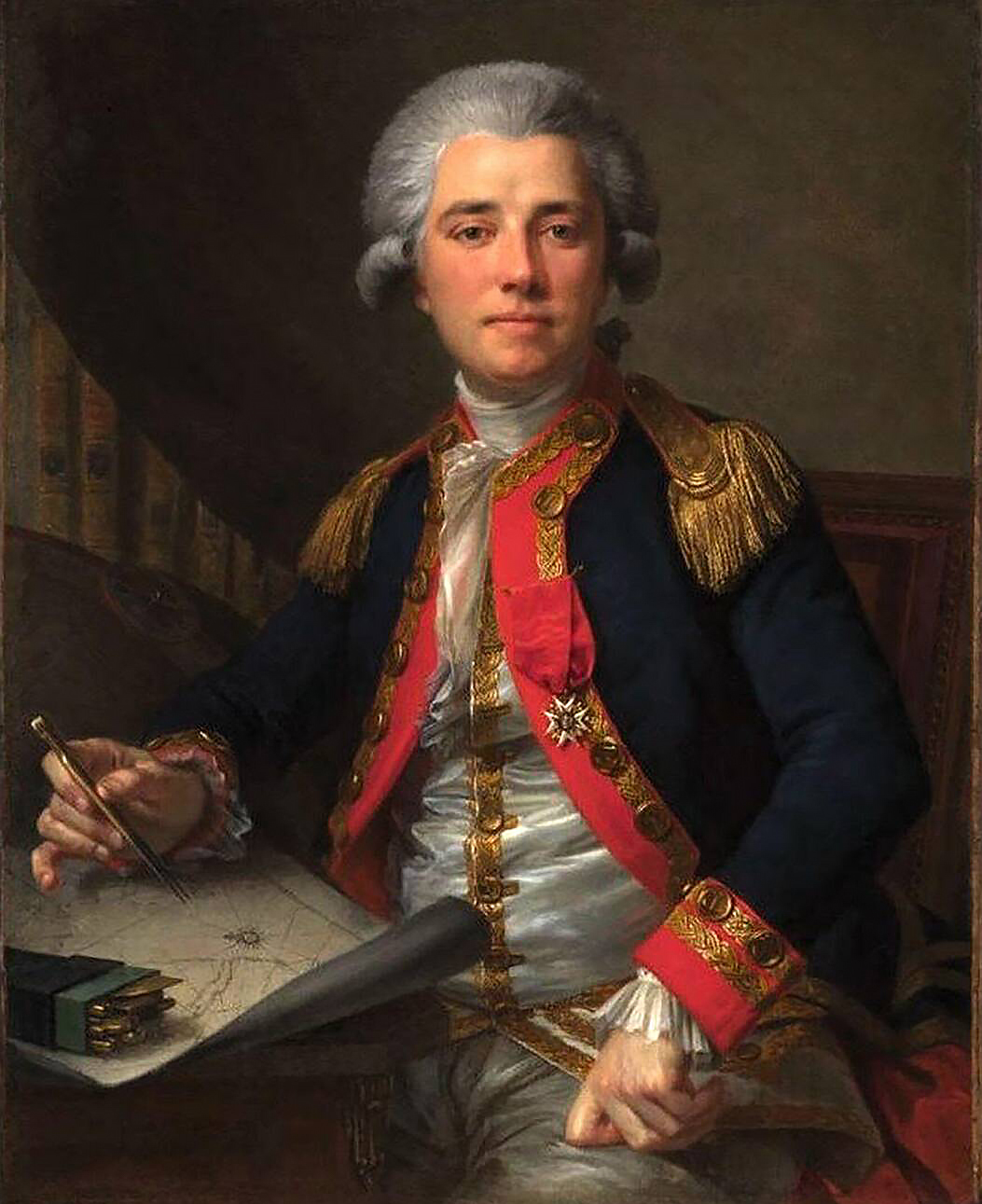La Pérouse, Comte de (1741-1788?), also spelled Lapérouse, was a French naval captain and explorer. He is best known as the leader of the La Pérouse expedition, which explored the Pacific Ocean during the late 1700’s. La Pérouse and his crew went missing in 1788. La Pérouse’s written accounts of his journey, published after his disappearance, significantly increased European knowledge of the Pacific region. 
La Pérouse was born in August 1741 in Albi, in southern France. His birth name was Jean-François de Galaup. At 15 years old, he joined the French naval service. He took part in the conflict between the French and British navies during the Seven Years’ War (1756-1763). La Pérouse was promoted to lieutenant in 1777. Beginning in 1778, La Pérouse also fought in the American Revolution (1775-1783), as part of France’s alliance with the American colonies. Over the course of the war, he was promoted to captain and then to commodore. During his wartime service, La Pérouse became known as a skilled navigator and courageous leader.
Following the end of the American Revolution, La Pérouse was chosen to lead an exploratory expedition to the southern region of the Pacific Ocean. He was appointed by King Louis XVI of France, who ordered the expedition after learning about the voyages of the British explorer James Cook. The expedition’s crew was made up of experienced artists, sailors, and scientists. They were equipped with advanced scientific and navigational tools. As part of the expedition’s mission, La Pérouse was expected to complete Cook’s maps of the South Pacific. He was also instructed to find new trade routes and make contact with Indigenous (native) peoples in the area.
On Aug. 1, 1785, La Pérouse and his crew departed from the port city of Brest, France, on the ships L’Astrolabe and La Boussole. They sailed southwest around Cape Horn, the southernmost tip of South America, and then headed north. Following a stop in Chile, La Pérouse visited Easter Island in early 1786. The expedition then sailed to the Hawaiian Islands, where the crew became the first known Europeans to land on the island of Maui. As the expedition encountered lands that had been previously unexplored by Europeans, La Pérouse and the crew made numerous maps and drawings, which they later sent back to France.
In June 1786, La Pérouse sighted part of the coast of Alaska. There, he sailed into a narrow bay (now Lituya Bay), which he claimed as French territory. He then sailed south along what would later become the western coast of the United States. In September, the expedition departed from the town of Monterey, California, and sailed west toward Asia.
After crossing the Pacific Ocean, La Pérouse visited several port cities in Asia. He sailed through a strait (narrow waterway) between the islands of Hokkaido and Sakhalin. Among Western nations, the waterway is now called La Pérouse Strait. Later, La Pérouse landed on several Polynesian islands in the Pacific, including what is now the country of Tonga. He then sailed west, reaching the British colony of Botany Bay, Australia, in January 1788. The British expedition known as the First Fleet had settled at Botany Bay only days before La Pérouse’s arrival.
After leaving a report of the expedition with British authorities, La Pérouse departed from Botany Bay in March. The report, which detailed La Pérouse’s plans to return to France, was the last known record of the expedition. Somewhere along their route back to France, La Pérouse and his crew went missing. In 1791, the French government sent the French naval commander Bruni D’Entrecasteaux to search for La Pérouse, but he was unsuccessful. For many years, other expeditions also failed to find any evidence of what had happened to the expedition.
Finally, in 1826, the Irish explorer Peter Dillon found artifacts from the La Pérouse expedition on the island of Tikopia (now part of the Solomon Islands). The artifacts had come from the island of Mannicolo (now Vanikoro). Later expeditions to Vanikoro discovered the wreckage of L’Astrolabe and La Boussole along its coast. Historians now suspect that the La Pérouse expedition shipwrecked on Vanikoro’s reefs during a storm. Several members of the crew survived the shipwreck and then stayed on the island.
